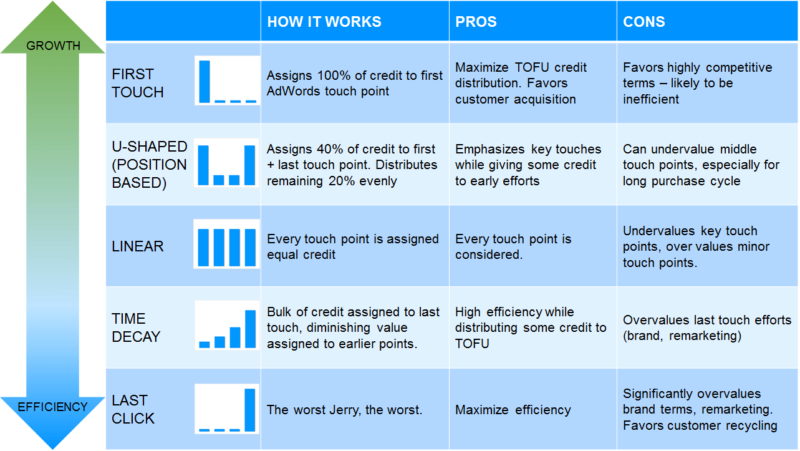What’s the best attribution model For PPC?
Columnist Aaron Levy explores some common attribution models used by digital marketers. Which one is right for your business or client?
Last-click attribution has been the default for digital marketers since the beginning of time. It’s easy, it’s tangible, it’s close to the finish line, and in general, it makes us PPC managers look great. And that’s the problem.
Let’s face it — the last-click metrics we’ve been operating on for years have been greatly over-assigning credit to the last interaction. Think about it from a sporting perspective. We all love watching Usain Bolt close out a relay race by sprinting 30 miles per hour, but could he win the race if his team drops the baton? I personally love watching Jordan Speith drop putt after putt in every golf tournament that he plays in (maybe I’m the only one…), but does that matter if he hit his first two drives out of bounds? (In my golf world, that works just fine — but that’s a story for another day.)
You get the point: Last-click is wrong. Unfortunately, first-click attribution is wrong as well. So is position-based, time-decay… even data-driven attribution has some major flaws.
So, which one is right? That depends on goals and what story you want the message to be. The fact of the matter is that attribution modeling is completely, 100 percent made up. It’s up to you to assign credit to the metrics and channels that are most important to your business or client.
If every attribution model is wrong and right at the same time, which is the best for you to use? All of them? None of them? It’s confusing.
Let’s break the common attribution models down based on their pros and cons to figure out which works best for each scenario.
Generally speaking, your position in the attribution chart is mostly based on your broad-funnel marketing goals.
If your goal is to be as efficient as possible, your best bet is to get close to the bottom of the funnel; last-click attribution is the most extreme of the efforts here. I haven’t been shy about my distaste for last click, so I obviously won’t recommend that. If your goal is PPC efficiency, and outward growth isn’t as important, I recommend a time-decay model.
If your focus is on growth and new customer acquisition, closer to the top of the funnel is better. First click won’t do for the same reason as last — it only looks at one tiny piece of the pie.
My ideal recommendation unfortunately isn’t offered by Google in AdWords or Analytics. I’d love to use a reverse iteration of time decay (known as first preferred in many bid tools), but since it’s not available, we’ll have to settle for position-based (or u-shaped).
Should I take advantage of Google’s data-driven attribution modeling?
Maybe. It looks good on paper. Google uses a myriad of user behavior data and general math-y smartness to create a variable model that’s most likely to maximize total conversion volume. In a perfect world, this would mean you’d find a data set that would increase your AdWords conversion volume through the roof.
The problem with in-AdWords data-driven attribution is that it’s a single-channel view. While it’ll assess every single aspect of your AdWords data to make a decision, it will only look at AdWords data to make a choice. You’ll have little influence as to whether or not you’re targeting new customers, and you won’t be able to identify conversions that may have come through other non-search efforts like email or social.
That’s not saying I’m totally against it. Single-channel data-driven attribution like Google’s put together can be quite powerful if you have the right data set to support it. Google recommends a minimum of 20,000 clicks and 800 conversion actions in a given month. Frankly, this sounds low on my end.
If your conversion lever is simple and high-funnel (think a button click, key page view and so on), and you have well over 1,500 conversions a month, by all means use this tool to your advantage. If your campaigns are more modest and your goals more detailed, however, stick with position-based to start and adjust based on your goals.
So what’s the best attribution model for PPC? Just like everything else in our industry, it depends!

